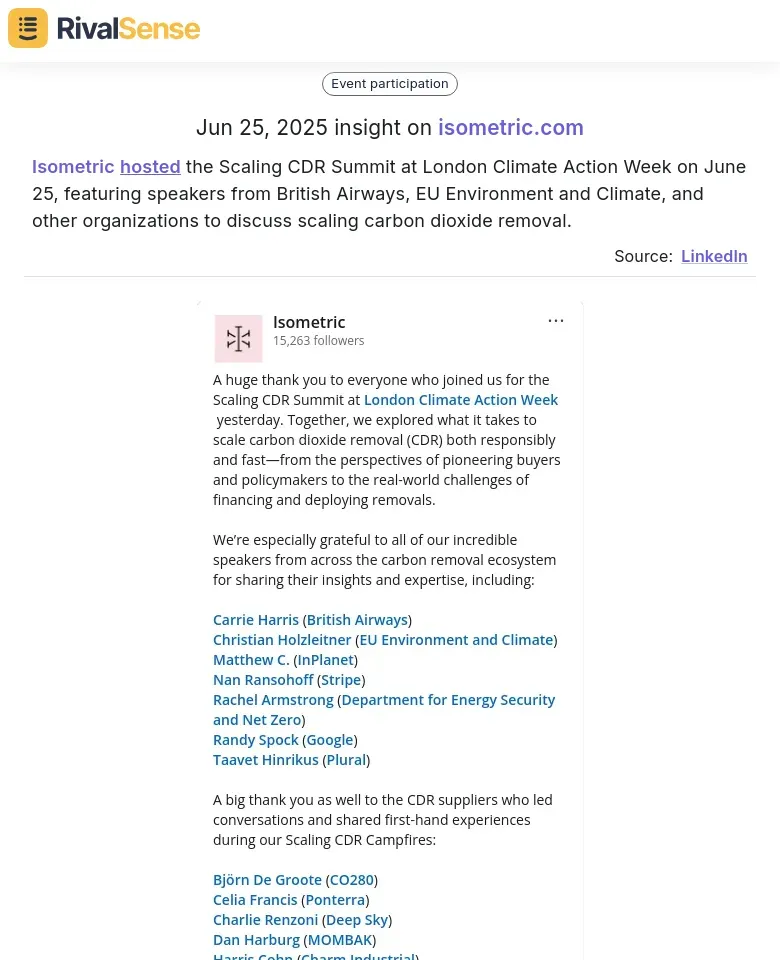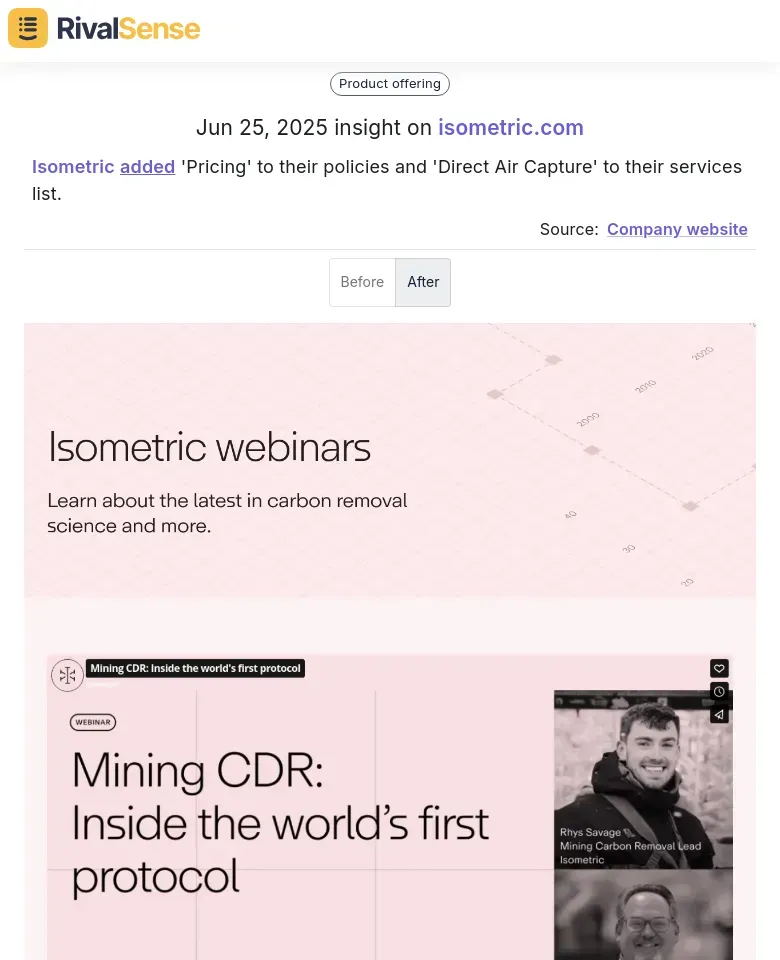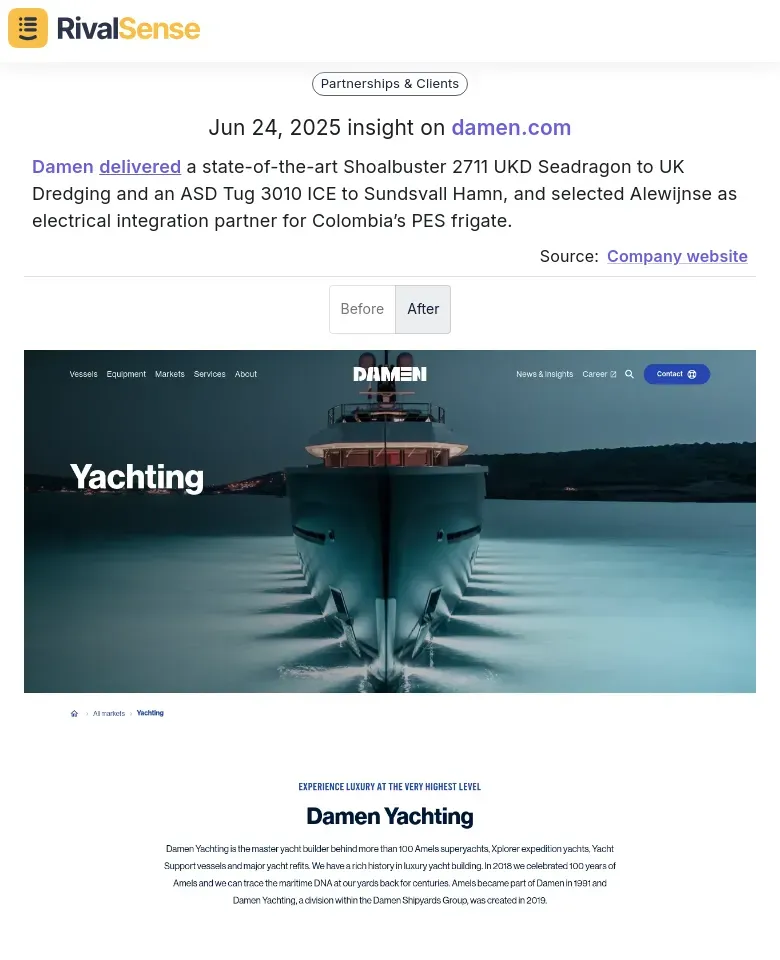Avoid These Mistakes When Tracking Competitor Design Changes in Survival Products
In the fast-evolving survival products market, keeping an eye on competitor design changes isn't just about staying ahead—it's about survival. Monitoring these updates can reveal shifts in market trends, emerging consumer preferences, and even new technological advancements. For instance, a competitor's shift to lightweight materials might indicate a broader industry move towards portability. However, tracking these changes isn't without its challenges. Many businesses fall into the trap of focusing solely on aesthetics, missing the underlying strategic reasons for the redesign. Others rely on sporadic checks rather than systematic monitoring, leading to missed opportunities or late responses. To avoid these pitfalls, start by establishing a regular review schedule—weekly or bi-weekly—to ensure timely updates. Use tools like RivalSense to automate tracking and receive alerts for significant changes. Additionally, analyze not just the 'what' but the 'why' behind design shifts. Is it a response to customer feedback, a new regulation, or a technological breakthrough? Finally, benchmark these changes against your own product designs to identify gaps or opportunities for innovation. By adopting a structured approach, you can turn competitor design tracking into a strategic advantage.
🧩 Mistake 1: Ignoring the Context Behind Design Changes
Understanding the 'why' behind a competitor's design change is as crucial as spotting the change itself. Without context, you risk misinterpreting their strategy, leading to misguided decisions. For instance, tracking events like Isometric hosting the Scaling CDR Summit at London Climate Action Week provides invaluable context about their strategic focus on carbon removal solutions. This insight helps explain why they might prioritize eco-friendly materials in product designs—information that directly impacts your innovation roadmap.

Why it matters: Event tracking reveals strategic priorities that influence design decisions.
Practical steps to uncover context:
- Monitor Competitor Communications: Check their official channels for announcements.
- Engage with Customer Feedback: Reviews and forums often hint at why changes were made.
- Analyze Market Trends: Align the change with industry shifts or emerging consumer preferences.
- Use Competitive Intelligence Tools: Automate tracking to save time and ensure you don’t miss critical context.
By focusing on the 'why,' you can better assess whether to emulate, avoid, or innovate beyond your competitor's moves.
🔍 Mistake 2: Overlooking Small but Significant Design Tweaks
In the competitive landscape of survival products, even the smallest design tweaks can dramatically impact product performance and customer preference. Overlooking these subtle changes is a critical mistake that can leave you trailing behind. For example, Isometric adding 'Pricing' to policies and 'Direct Air Capture' to services might seem minor, but such website updates often precede product design changes targeting new customer segments. Spotting these early signals helps anticipate material or feature adjustments before competitors launch revamped products.

Why it matters: Policy/service updates signal strategic shifts that influence design priorities.
To avoid missing these crucial details, adopt these tools and techniques:
- Visual Comparison Tools: Use software to overlay competitor product images and spot differences.
- Customer Feedback Analysis: Monitor reviews for mentions of new features or improvements.
- Regular Audits: Schedule monthly reviews of competitor product lines.
- Prototype Testing: Compare your products with competitors’ to identify functional advantages.
By paying attention to subtle modifications, you can stay ahead in the market and continuously improve your offerings.
🚀 Mistake 3: Failing to Act on the Insights Gained
Failing to act on the insights gained from tracking competitor design changes is a critical mistake that can leave your survival products lagging behind. The consequences are clear: missed opportunities for innovation, slower response to market trends, and a weakened competitive edge. For instance, when Damen delivered specialized vessels and announced new partnerships, competitors who acted on this intel could reverse-engineer design improvements in durability and functionality. Tracking such moves reveals where competitors invest R&D resources—insights demanding immediate action.

Why it matters: Deliveries and partnerships showcase real-world design applications requiring competitive response.
To translate observations into action:
- Prioritize Insights: Use this checklist:
[ ] Aligns with your brand and customer needs? [ ] Resources required for implementation? [ ] Expected ROI? - Schedule Strategy Sessions: Review insights quarterly to decide actionable steps.
- Benchmark Proactively: When competitors enhance ergonomics or materials, adapt swiftly.
Practical tip: When Company X noticed a competitor introducing ergonomic handles, they redesigned their gear for better comfort—boosting sales by 18%.
🤖 Mistake 4: Relying Solely on Automated Tools Without Human Analysis
While automated tools are invaluable for tracking competitor design changes in survival products, relying solely on them can lead to misinterpretations. These tools often miss the nuances behind design alterations, such as the strategic intent or user experience improvements. Human intuition and expertise remain irreplaceable for interpreting subtleties like why a competitor prioritizes modular components over integrated systems. Without contextual analysis, you risk overlooking how design changes align with broader market shifts.
To avoid this mistake, follow these best practices:
- Combine Tools with Human Analysis: Use automation for data gathering but review findings manually.
- Leverage Expertise: Involve design/market specialists to uncover the 'why' behind changes.
- Contextualize Changes: Consider market trends and competitor strategies together.
- Schedule Manual Reviews: Complement automated tracking with quarterly deep dives.
- Ask Strategic Questions: ">Why did they make this change? How does it align with their brand?"
By blending technology with human insight, you gain a comprehensive understanding of competitor moves.
✅ Conclusion: Building a Robust Competitor Design Tracking Strategy
Avoiding these common pitfalls ensures your survival products stay competitive in dynamic markets. Key takeaways include prioritizing context for design changes, monitoring subtle tweaks, acting decisively on insights, and balancing automation with human analysis. Implement a structured approach: automate tracking with specialized tools, categorize changes by impact level (high/medium/low), and hold monthly team reviews to convert findings into action plans. Continuously refine your strategy by incorporating customer feedback and market shifts.
Competitor Tracking Checklist:
- ✅ Automate tracking to save time and reduce errors
- ✅ Categorize and prioritize design changes
- ✅ Schedule regular cross-departmental reviews
- ✅ Adapt strategy based on market evolution
Turn insights into action: See how RivalSense tracks competitor moves like product updates, pricing changes, and partnerships—delivering actionable intel in weekly reports. Try it free today and get your first competitor analysis immediately!
📚 Read more
👉 How Smartpress's Product Shift Spurred Competitor Innovation
👉 Quick Instagram Hacks for Competitor Earnings Insights
👉 Best Practices in Competitive Intelligence for Wood-Based Panel Leaders
👉 5 Actionable Competitive Intelligence Insights for Product Strategy
👉 Decoding Noom's Muscle Defense™ Launch: Turning Competitor Insights into Action
